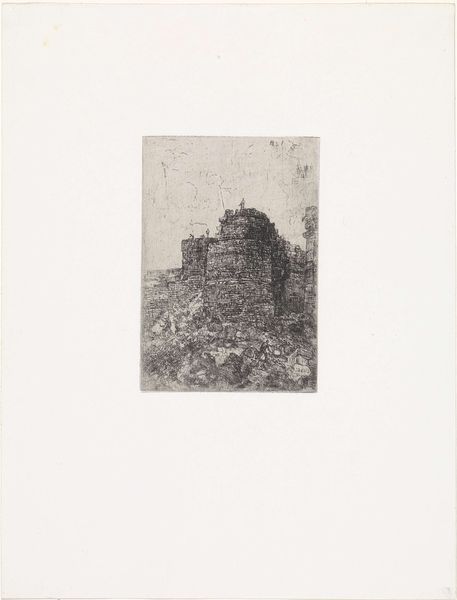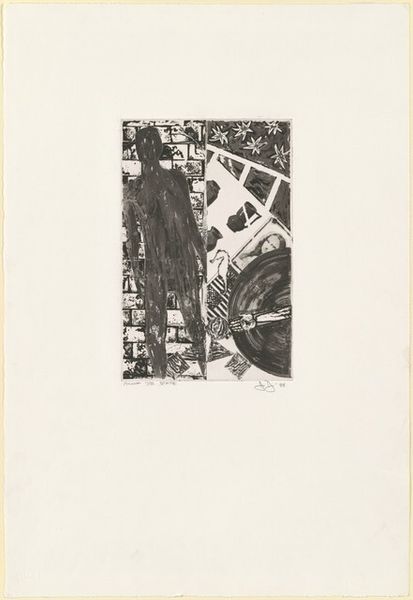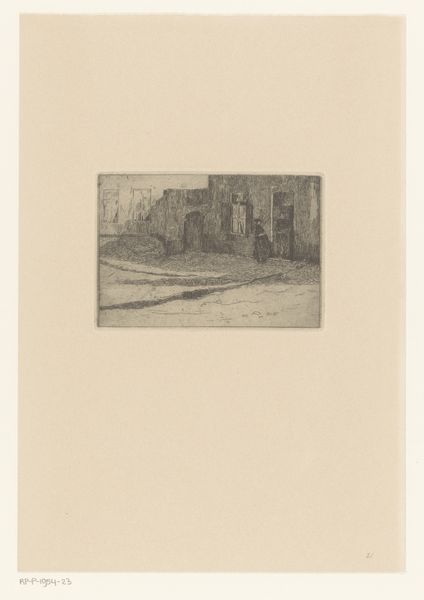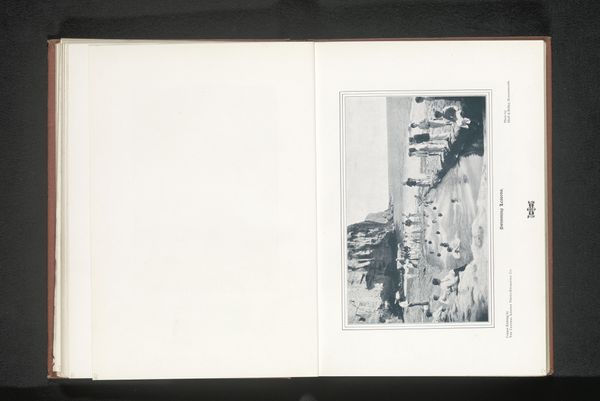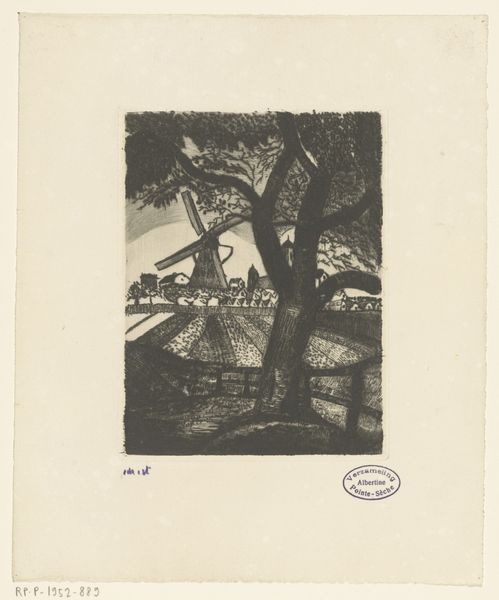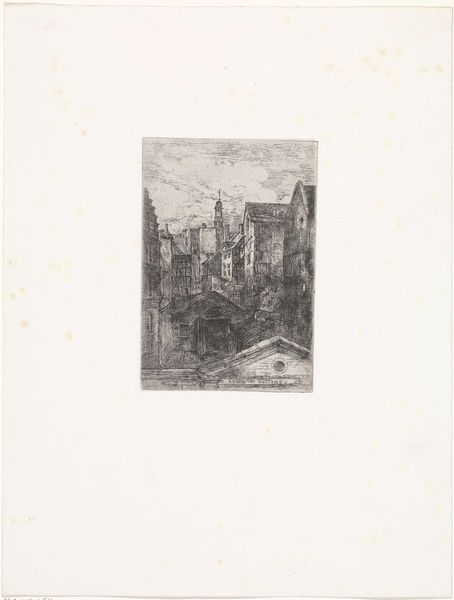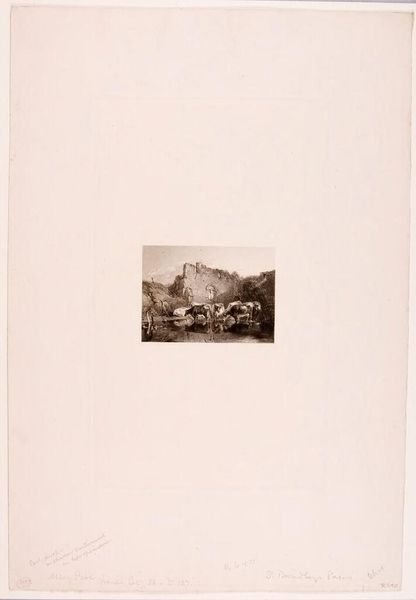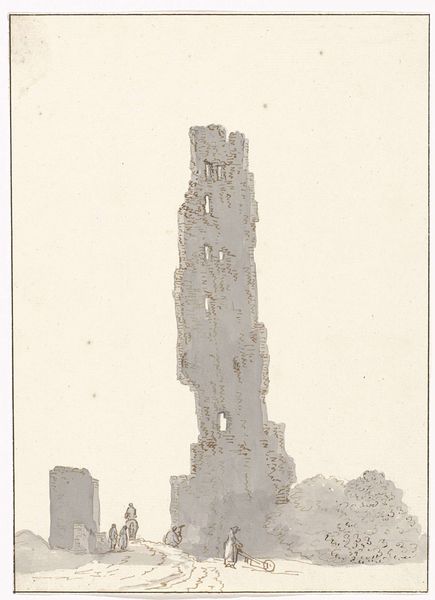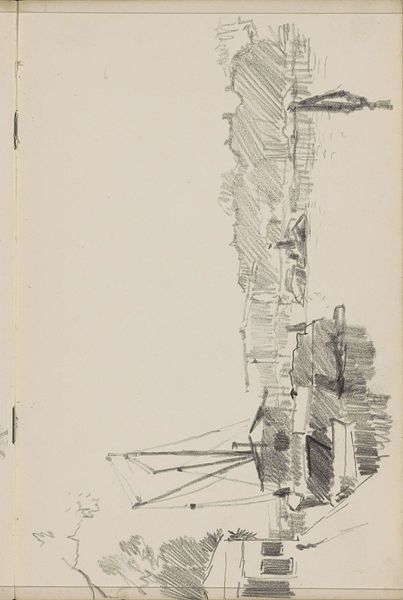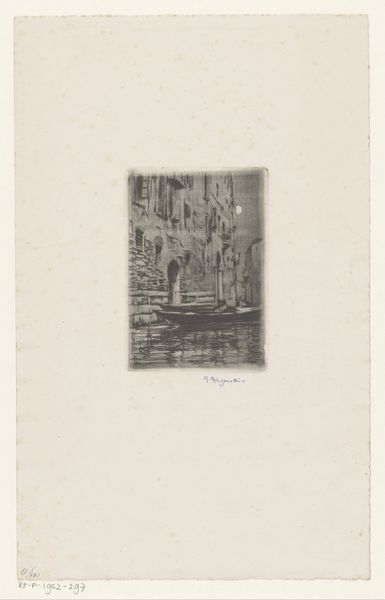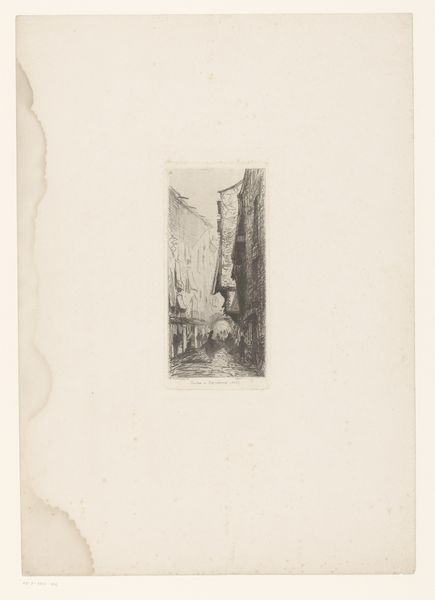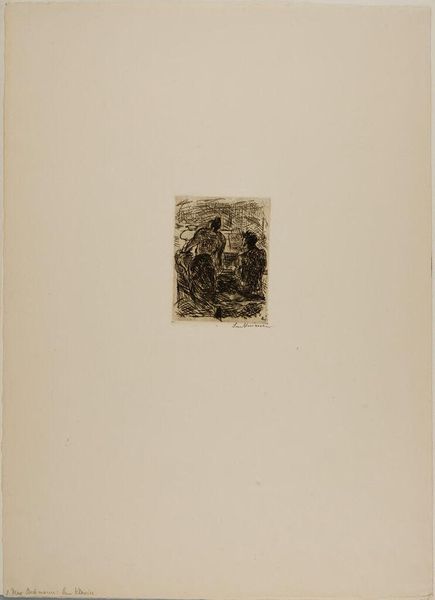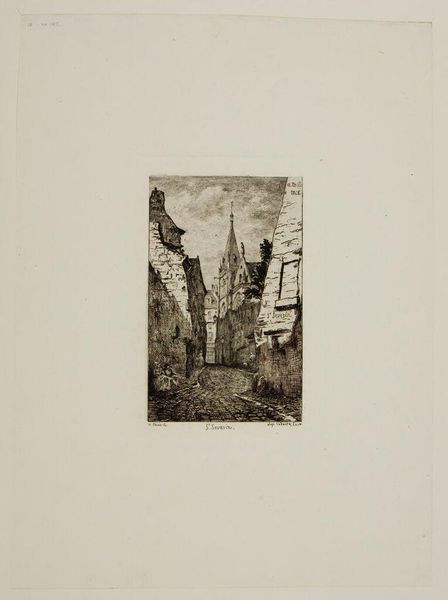
print, etching, drypoint
#
photo of handprinted image
#
toned paper
#
light pencil work
#
ink paper printed
# print
#
etching
#
old engraving style
#
white palette
#
culinary art
#
united-states
#
watercolour bleed
#
watercolour illustration
#
drypoint
#
watercolor
Dimensions: 6 x 4 13/16 in. (15.24 x 12.22 cm) (plate)17 13/16 x 13 3/8 in. (45.24 x 33.97 cm) (sheet, irregular)
Copyright: No Copyright - United States
Editor: This is Earl Horter’s "The Dark Tower" from 1919, an etching and drypoint print currently housed here at the Minneapolis Institute of Art. I’m immediately struck by how it renders the architectural forms into stark silhouettes, creating a somewhat brooding atmosphere. What visual elements stand out to you in this piece? Curator: Immediately, the dramatic interplay of light and shadow asserts itself as the dominant element. Horter uses the stark contrast afforded by the printmaking process to articulate form. Notice how the dense, velvety blacks of the tower are juxtaposed against the subtly toned paper, thereby creating a visual hierarchy. The texture, achieved through the etching and drypoint techniques, enhances the tactile quality of the image, drawing attention to the materiality of the artwork itself. How do you feel that the choice of such high contrast enhances the narrative qualities of the artwork? Editor: I see what you mean. The high contrast definitely intensifies the drama. It almost feels like I’m looking at a scene from a film noir, even though it's a cityscape from 1919. Curator: Precisely. Consider how Horter meticulously crafts this tension not just through light, but through line. Observe the fineness and precision of the etched lines which build up into heavier masses and darker textures to define spatial relationships in the picture. To that end, would you suggest this meticulous approach evokes, or even mimics, characteristics commonly associated with industrial urban design of the period? Editor: Perhaps it suggests a commentary on the structures that dominate the physical and psychological space. I definitely have a better appreciation of how the artistic elements influence its tone, all because of your questions. Curator: And by scrutinizing those lines and forms, we grasp how technique breathes life into and evokes the urban condition.
Comments
No comments
Be the first to comment and join the conversation on the ultimate creative platform.
